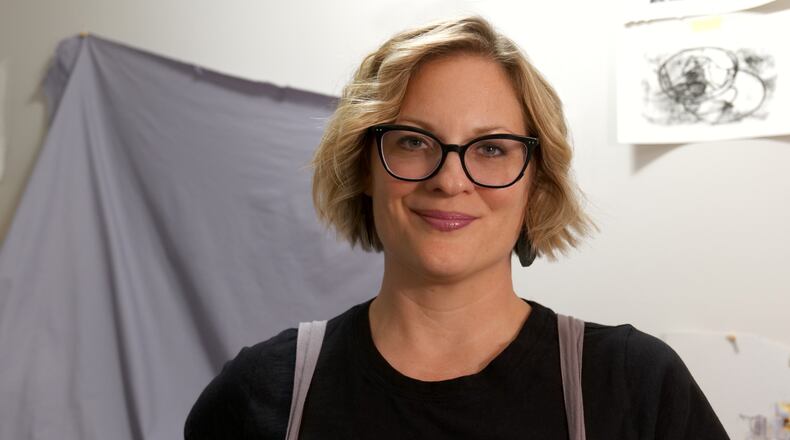The story being told through art became personal — what did these objects say about the person commissioning them? It is only in the modern era that art tells the story of the artist rather than the patron. Cortés’ digital still lives dig into the connection between personal object and family history.
Here, Cortés talks about her process and inspirations.
Credit: Contributed
Credit: Contributed
You work at The Modern College of Design in Kettering. In what capacity?
I’m an instructor and I teach Motion Design. I teach how we can animate 2-D graphics like text or logos with particular software. It’s working with time, which is what I do in my artwork, too.
Tell about your transition from fine art to digital.
While I was in undergrad at Wright State I got a job in the marketing department doing Photoshop and Illustrator. It clicked with me; I liked using those digital tools. For a while it was separate from painting and drawing. By the time I got my graduate degree in Electronic Arts from the University of Cincinnati in 2003, I was exploring video and how I could use the media to convey something creative and personal.
Do you start with physical objects and then translate them to digital?
I start with physical objects, lighting and sketching. I tell my students it’s still really important to continue this direct connection between your hand and your brain. I put objects in different contexts and think about what they mean to me, what they could visually symbolize.
In one work, I started with capturing the objects passed down from my family, like milk glass containers, by photographing and recording them with a video camera. I learned 3D (computer) programs and started modeling the objects in 3D space. There’s a program called Nomad Sculpt. You start with a basic shape like a cylinder, and then you can manipulate it, and essentially sculpt it digitally. I was looking at the objects at home and handling them but I recreated them in that program.
Credit: Contributed
Credit: Contributed
There are references in your work to formal elements of drawing such as vanishing points and the horizon line. Does the title, “Vanishing Point,” refer to the artwork’s composition, or is it an analogy?
I’m from Miami County. It’s very flat and has its own “tabletop feel.” Everything moves to that horizon line for me. I’m also referencing it conceptually, that’s where memories go to vanish. That’s where my history goes. I was trying to have this correlation between the horizon line and a still life tabletop. That idea that in a still life, the tabletop creates its own horizon line.
Credit: Contributed
Credit: Contributed
In “Houseproud (home movie),” an interview with your mother is interrupted by phone calls and the conversation seems to lose its train of thought, like memories fading. Can you talk about the role of memory in your work?
I can’t sit down and do anything with my mom without people interrupting. But it served itself well and I kept it because that’s exactly how it is with things that are passed down. Sometimes we don’t get the complete story. We’re lucky to get objects from our family and a sense of where we came from. In a way they make us whole.
The Super 8 film that I used in “Houseproud” was me archiving and migrating those family reels from film to digital. My mom had a bigger family than we have. Over time it’s gotten smaller and smaller. We don’t have the same kind of memories. I was looking to populate my own history with some of her history.
Credit: Contributed
Credit: Contributed
What artists inspire you?
There are local artists that encourage me day-to-day as a person, a mother, and someone who is trying to carve out a life with art, and then there are artists that I look to for visual inspiration. Jeanne Philipp is a retired professor from the University of Dayton (who inspires me) on a personal level. One artist I look to for inspiration for photography and composition is Laura Letinsky. She teaches at the University of Chicago. Her still lives have this beautiful quietness to them that also incorporate household items.
This interview has been edited for length and clarity. Find out more about the artist at tesscortes.net. Contact this writer at hannah.kasper@gmail.com.
More details
“Tess Cortés: Vanishing Point” is on view at the Jack W. And Sally D. Eichelberger Foundation Video Gallery in The Contemporary Dayton. More info at codayton.org/tess-cortes-vanishing-point.
About the Author





